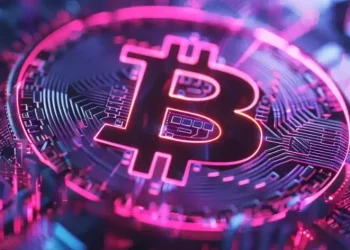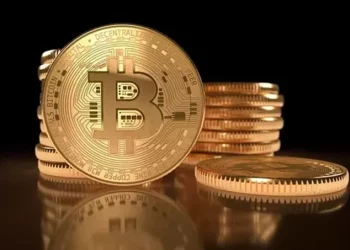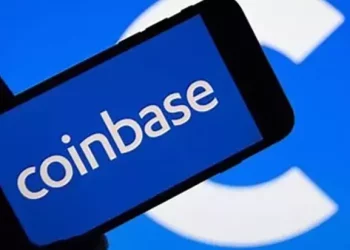Binance Coin (BNB) is one of the most prominent cryptocurrencies in the market today. Initially launched in 2017, it has become an integral part of the Binance ecosystem and is used in various ways to facilitate transactions, reduce costs, and participate in the growth of the platform. Binance Coin is a utility token, meaning it has a specific use case within the Binance exchange and the broader Binance ecosystem. This article will provide an in-depth look at what Binance Coin is, its history, its role within the Binance platform, and how it is used by individuals and businesses in the cryptocurrency space.
The Genesis of Binance Coin (BNB)
Binance Coin was created by the Binance exchange, one of the largest and most widely used cryptocurrency exchanges in the world. The exchange was founded by Changpeng Zhao, often referred to as “CZ,” in 2017. Binance quickly gained traction due to its low trading fees, a wide range of available cryptocurrencies, and a user-friendly interface. As the platform grew in popularity, Binance launched its native cryptocurrency, Binance Coin (BNB), as a way to incentivize users to trade on their platform and offer various benefits within the Binance ecosystem.
BNB was initially introduced as an ERC-20 token on the Ethereum blockchain, but it was later migrated to its own blockchain, known as Binance Chain, in 2019. The move to Binance Chain allowed BNB to have greater speed, efficiency, and scalability compared to its previous ERC-20 structure.
The primary function of Binance Coin at the time of its launch was to provide users with the ability to pay for trading fees on the Binance exchange. Users who paid their fees using BNB were rewarded with discounted rates, which made the token appealing to traders. Over time, the scope of BNB expanded, and it is now used for a variety of applications, both within the Binance platform and in the broader cryptocurrency ecosystem.
Binance Coin’s Role in the Binance Ecosystem
Binance Coin serves as the backbone of many features and services within the Binance ecosystem. The Binance platform offers a variety of products, including spot trading, futures trading, staking, savings, and more. BNB is used in a variety of ways to enhance the user experience across these products. Some of the key use cases for Binance Coin are outlined below:
1. Trading Fee Discounts
One of the primary use cases for Binance Coin is paying for trading fees on the Binance exchange. Traders who use BNB to pay for transaction fees receive discounts, which can vary depending on the level of the user’s membership and the specific trading pair. The discount structure is designed to incentivize users to hold and use BNB, creating a network effect that benefits both Binance and its users.
The discount is often tiered based on the amount of BNB held in a user’s account. For example, a user with a large amount of BNB may receive a higher discount on their trading fees than a user with a smaller amount. This encourages users to hold onto their BNB rather than selling it, which in turn helps to reduce the circulating supply of the token.
2. Token Burn Events
Binance uses a unique mechanism called a “token burn” to control the supply of BNB and maintain its value. Every quarter, Binance uses 20% of its profits to buy back and burn BNB, which reduces the total supply of the token. The goal of the burn events is to decrease the overall supply of BNB over time, which may increase its value if demand remains constant or increases.
The burn events are a significant aspect of Binance Coin’s deflationary design. By regularly reducing the circulating supply of BNB, Binance aims to create scarcity, which can drive up the value of the token. These burns also serve as a way to align the interests of Binance with those of its users, as the reduction in supply could benefit holders of BNB over the long term.
3. Binance Launchpad and Token Sales
Binance Coin plays a central role in Binance’s Launchpad, a platform that allows users to participate in Initial Exchange Offerings (IEOs). In an IEO, a project sells its tokens to the public in exchange for funding. Users who want to participate in an IEO typically need to hold a certain amount of BNB to qualify for the sale. The more BNB a user holds, the greater their chances of receiving an allocation of the project’s tokens during the IEO.
By using BNB to participate in these token sales, users can potentially profit from early-stage investments in blockchain projects. This makes Binance Coin an important tool for users who want to get involved in new and innovative cryptocurrency projects.
4. Binance Smart Chain (BSC) and DeFi
Another key function of Binance Coin is its use on Binance Smart Chain (BSC), a blockchain platform built by Binance that supports decentralized applications (dApps) and decentralized finance (DeFi) protocols. Binance Smart Chain offers a high-speed, low-cost alternative to Ethereum and has become a popular choice for developers looking to build decentralized applications.
BNB is used as the native currency on Binance Smart Chain, similar to how Ether (ETH) is used on Ethereum. Users pay transaction fees on the BSC network using BNB, which helps to power the entire blockchain ecosystem. Binance Coin’s role in BSC is vital for the functioning of the decentralized applications (dApps) and DeFi protocols built on the network.
Additionally, BNB is used in yield farming and staking on the Binance Smart Chain. Yield farming involves providing liquidity to decentralized exchanges and earning rewards in the form of cryptocurrency. Staking BNB also allows users to participate in the governance of the Binance Smart Chain, helping to ensure the network remains secure and functional.
5. Binance Card
Binance offers a crypto debit card, known as the Binance Card, which allows users to spend their cryptocurrency holdings, including BNB, at merchants worldwide. The Binance Card works similarly to a traditional debit card, except that it enables users to make purchases with cryptocurrency rather than fiat currency.
Users can load their Binance Card with BNB and other supported cryptocurrencies and spend them just like regular money. Binance also offers cashback rewards on purchases made with the card, providing an additional incentive for users to hold and use BNB for everyday transactions.
6. Peer-to-Peer (P2P) Trading
Binance Coin is also used in the peer-to-peer (P2P) trading platform that Binance provides. The P2P platform allows users to buy and sell cryptocurrencies directly with each other, bypassing traditional exchanges. BNB can be used to settle transactions on the P2P platform, further increasing the utility of the token.
Users can trade BNB for other cryptocurrencies or fiat money, providing additional flexibility for Binance Coin holders. The P2P platform is popular in regions with limited access to traditional banking services, as it allows users to buy and sell digital assets without relying on a centralized exchange.
Binance Coin’s Market Performance
Since its inception, Binance Coin has experienced significant growth. After its launch in 2017, BNB initially traded at a modest price. However, as Binance grew in popularity and the coin’s utility expanded, its value increased substantially. Binance Coin has been one of the top-performing cryptocurrencies, often ranked in the top 10 by market capitalization.
The price of Binance Coin has seen considerable fluctuations over the years, in line with the overall volatility of the cryptocurrency market. However, the regular token burns and increased demand for BNB within the Binance ecosystem have played a role in boosting the coin’s price over time. BNB’s use cases and the growth of Binance Smart Chain and DeFi applications have also contributed to the coin’s increased adoption.
The Future of Binance Coin
As the cryptocurrency industry continues to evolve, the future of Binance Coin looks promising. The Binance exchange remains one of the largest and most influential platforms in the market, and BNB’s use in Binance Smart Chain and decentralized finance is expanding.
Additionally, Binance Coin is likely to continue benefiting from the regular token burn events, which reduce its supply and potentially increase its value. The increasing adoption of DeFi protocols and dApps built on Binance Smart Chain is another factor that could drive demand for BNB in the future.
However, there are challenges that Binance Coin may face. Regulatory scrutiny of cryptocurrencies continues to increase, and changes in regulations could impact Binance’s operations or the demand for BNB. Competition from other blockchain platforms, such as Ethereum and Solana, could also affect the growth of Binance Smart Chain and the use of BNB.
Conclusion
Binance Coin (BNB) has grown from a simple utility token for the Binance exchange to a powerful cryptocurrency with widespread use in the DeFi space, Binance Smart Chain, and beyond. As a native token of the Binance ecosystem, BNB plays a crucial role in facilitating transactions, rewarding users, and supporting the growth of the platform. Its use cases continue to expand, and its future looks bright as long as Binance remains a major player in the cryptocurrency industry. As always, users should approach cryptocurrency investments with caution, conduct thorough research, and understand the risks involved before making any decisions.
Related topics:

















